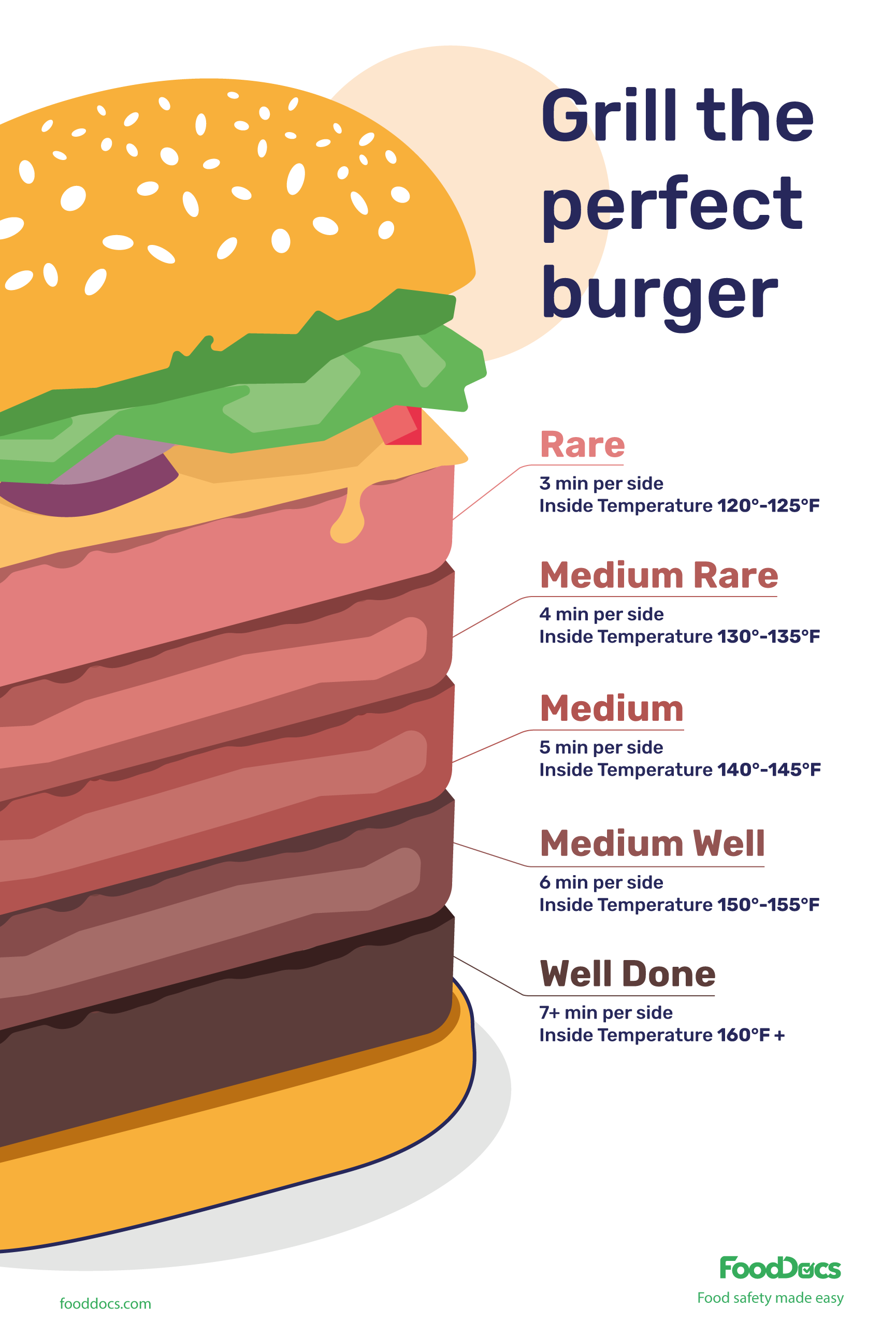Internal Temp Hamburger: Ensuring Safe and Delicious Cooking
– The article provides a burger temperature chart for cooking beef burgers to the perfect internal temperature.
– The chart includes the internal temperature and cooking time for different levels of doneness: medium-rare (130-135°F, 6 minutes), medium (145°F, 7-8 minutes), medium-well (150-155°F, 9 minutes), and well-done (160-165°F, 10 minutes).
– The USDA recommends cooking ground beef to at least 160°F for food safety.
– Medium-rare burgers are brown on the outside but still very pink in the middle, and they are considered super juicy and flavorful.
– Medium burgers are slightly longer cooked but still have a pink middle, providing juicy and flavorful beef.
– Medium-well burgers have a small amount of pink in the middle and should be watched closely during cooking.
– Ground beef should be cooked to well-done according to safety guidelines from the USDA.
– The best and most accurate way to determine when a burger is done is to use an instant-read meat thermometer.
– A well-done burger will have no pink in the middle.
– Burgers are safe to eat anywhere from medium-rare to well-done.
– The cooking time for burgers depends on the desired level of doneness.
– The perfect burger temperature depends on personal preference.
– The thickness of the burger patties affects cooking time and doneness level.
– Ground chicken or turkey should be cooked to an internal temperature of 160-165°F.
– The USDA mandates that pre-ground meat must be cooked to an internal temperature of 160°F to ensure food safety.
– Ground poultry must be cooked to a temperature of 165°F to be considered safe.
– Bacteria on whole cuts of meat are mainly on the surface and do not migrate inside, so steaks can be eaten at a medium-rare temperature of 130°F.
– When ground meat is made from whole cuts, the bacteria mixes throughout the meat, so it must be cooked to 160°F in the middle to kill any bacteria.
– Ground beef is more susceptible to contamination than whole cuts due to the process of grinding and processing, which distributes bacteria throughout the meat.
– Grocery stores and restaurants can serve contaminated meat if multiple cows are processed into one batch of ground beef.
– Chefs have different opinions on the USDA guidelines for cooking ground meat.
– Restaurants must adhere to USDA guidelines and work with health departments to create a Hazard Analysis and Critical Control Point (HACCP) plan.
– To serve a medium-rare burger, the meat must be ground in-house; pre-ground meat must be cooked to 160°F.
– Tips to reduce the risk of contamination when preparing burgers include keeping ground beef cold, using separate prep areas for raw meat and produce, and washing hands before and after handling raw meat.
– Grinding your own meat allows you to have control over what goes into your burger and experiment with different flavor combinations.
– Grinding meat at home is cost-effective and can save money compared to buying pre-ground meat.
– Any ground beef under 160°F is considered unsafe according to USDA standards.
– Different levels of doneness for burgers include well-done (160°F to 165°F), medium-well (150°F to 155°F), medium (140°F to 145°F), medium-rare (130°F to 135°F), and rare (120°F to 125°F).
– The article suggests using a two-stage cooking method for burgers to achieve the perfect doneness.
– Grilling burgers from frozen can yield good results.
– The two-stage method of cooking burgers on a grill involves initially cooking them on the unheated side of the grill, then moving them to the high-heat side to sear until the desired temperature is reached.
